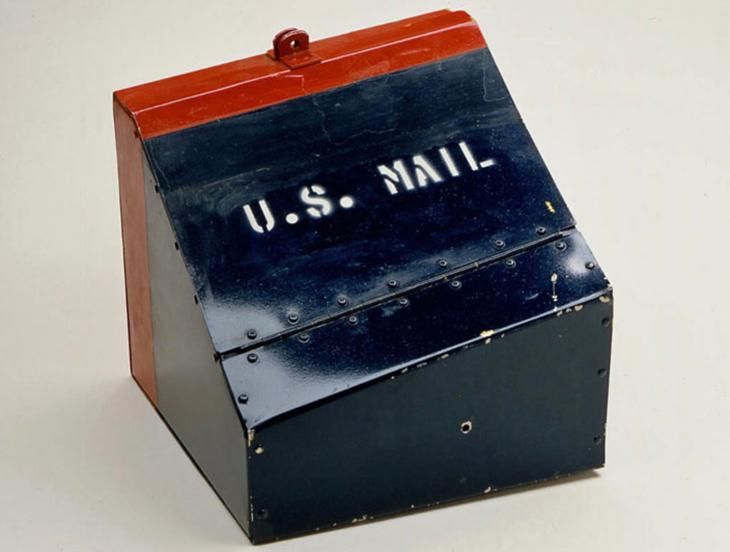When Missiles Delivered the Mail
58 years ago this month, a Regulus II missile took postal delivery to new heights.
/https://tf-cmsv2-smithsonianmag-media.s3.amazonaws.com/filer/58/f8/58f83d1a-5b65-4e82-8e79-ca1a6d44ce00/regulus.jpg)
Quick: What’s the strangest way to deliver mail that you can think of? By mule? On foot? By ship? By airplane? How about by missile? That’s right. More than one person thought delivering packages by rocket was an excellent idea.
Our neighbor, the National Postal Museum, notes that Austria and Germany were the first countries to try sending mail by rocket. The British Postal Museum & Archive—possibly not wanting to be left out—says that German inventor Gerhard Zucker launched his rocket mail in England in 1934. “The rocket, loaded with 4,800 letters, was launched from Scarp Island to Hushinish Point, on the Isle of Harris.... However, instead of shooting up and over the Sound of Scarp, there was a flash, a dull explosion and a cloud of smoke. The scorched letters fell like confetti onto the beach.”

In 1935, Stephen Hector Taylor-Smith of Sikkim (a British Protectorate in the Himalayas between Nepal, Tibet, and Bhutan) decided to deliver the mail using rockets from the Oriental Fireworks Company of Calcutta. (His lifelong interest in rocketry started with the airborne transportation of lizards over the St. Patrick’s School swimming pool.) In the name of science, Taylor-Smith fired a rooster and hen (named Adam and Eve) across the Damoodar River on June 29, 1935.
The Postal Museum is careful to note that “rocket enthusiasts” (not the Post Office Department) sent mail hurtling from Texas to Mexico (about 4,000 feet) in 1936.
But things really took off in 1958, when a U.S. naval officer casually tossed a letter into a Regulus II missile to be fired from the USS Greyback. The United States’ “first official missile mail” flight took place 52 years ago this month, when Postmaster Summerfield decided to cram 3,000 letters into a guided Regulus 1 missile from the submarine USS Barbero. (The missile was sent from the submarine to the Naval Auxiliary Air Station at Mayport, Florida.) Summerfield was an enthusiastic fellow who believed that “Before man reaches the moon, mail will be delivered within hours from New York to California, to Britain, to India or Australia by guided missiles.”
Not everyone was supportive. As the Postal Museum’s website notes, Summerfield’s successor, J. Edward Day, terminated the program. “We are not using ICBM’s to carry mail,” he stated. “Our predecessors in the Department actually shot some mail up in a missile here in Florida a few years ago. But the press releases about this incident moved much faster than the missile mail. I understand that the letters took eight days to get to their destination.”
